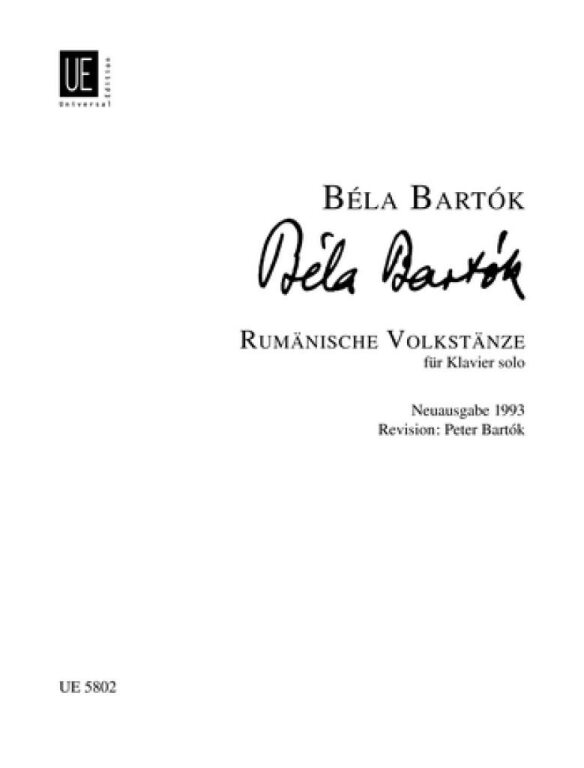Bartók Béla: Rumänische Volkstänze
However, the war initially forestalled publication, planned for 1914-1915, from the Máramaros county collection; it was issued in 1967. The 1115 instrumental melodies include the seven which Bartók assembled to form the cycle Romanian Folk Dances from Hungary.
He enqueued the seven melodies into one and the same category; they all have a solid, closed form, mostly in four lines, shaped into seven airs around six different dances originating in four areas of Transylvania. He selected the pieces from a large region, also altering their sequence according to his own conception.
First is The Dance with the Staff, performed by one youth alone; it is embellished with complicated steps, finishing - as Bartók notes - with a leap so high that the youth can kick the low ceiling.
The second is a round dance called Brâul, which a 30 year-old man played for Bartók on a shepherd's flute.
Bartók likely learned the third dance from the same flutist. The name The Stomper refers to the choreography; a pair of performers clops out the dance on the spot.
The fourth dance, The Dance of the Butschumers, comes from the Romanian village of Bucium (Butschum). Bartók heard this beautiful andante theme, rocking in 3/4 time, played by a gypsy on the violin.
The Romanian polka (Poarga romancasca, allegro) is rhythmically the most interesting piece in the cycle, thanks to its constant alternation of 2/4 and 3/4 metre.
The cycle closes with two rapid dances, called Măruntel.
Only those who have heard and revelled in the Romanian folk dances in Transylvania can truly appreciate Bartók's arrangements; the entire wealth and colourful variety of village life come alive in the concert hall.
 Deutsch
Deutsch English
English Español
Español Français
Français Magyar
Magyar Polski
Polski Slovenský
Slovenský Slovenščina
Slovenščina 中文
中文